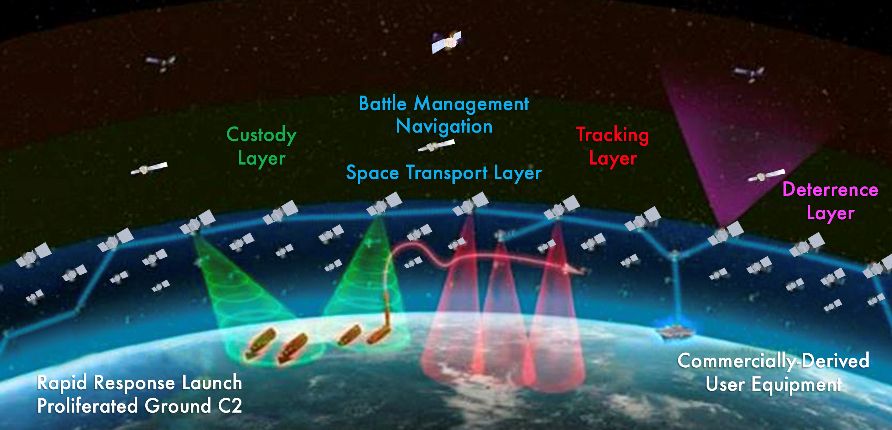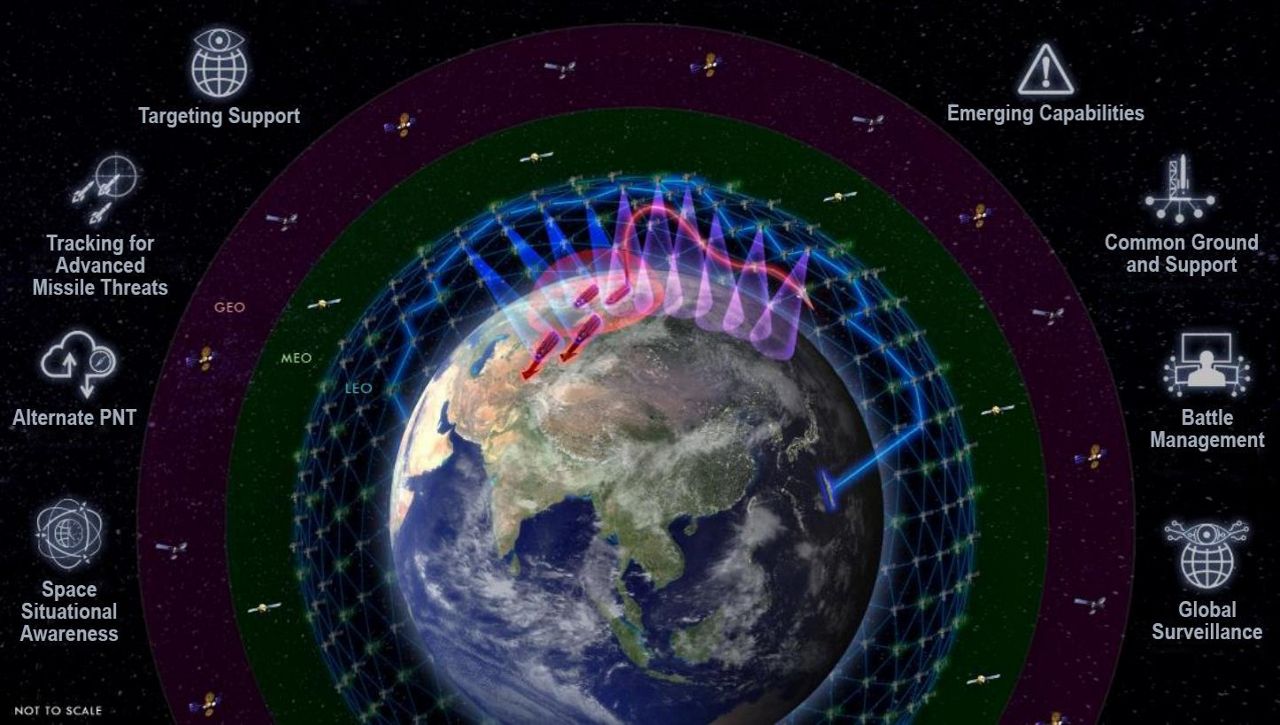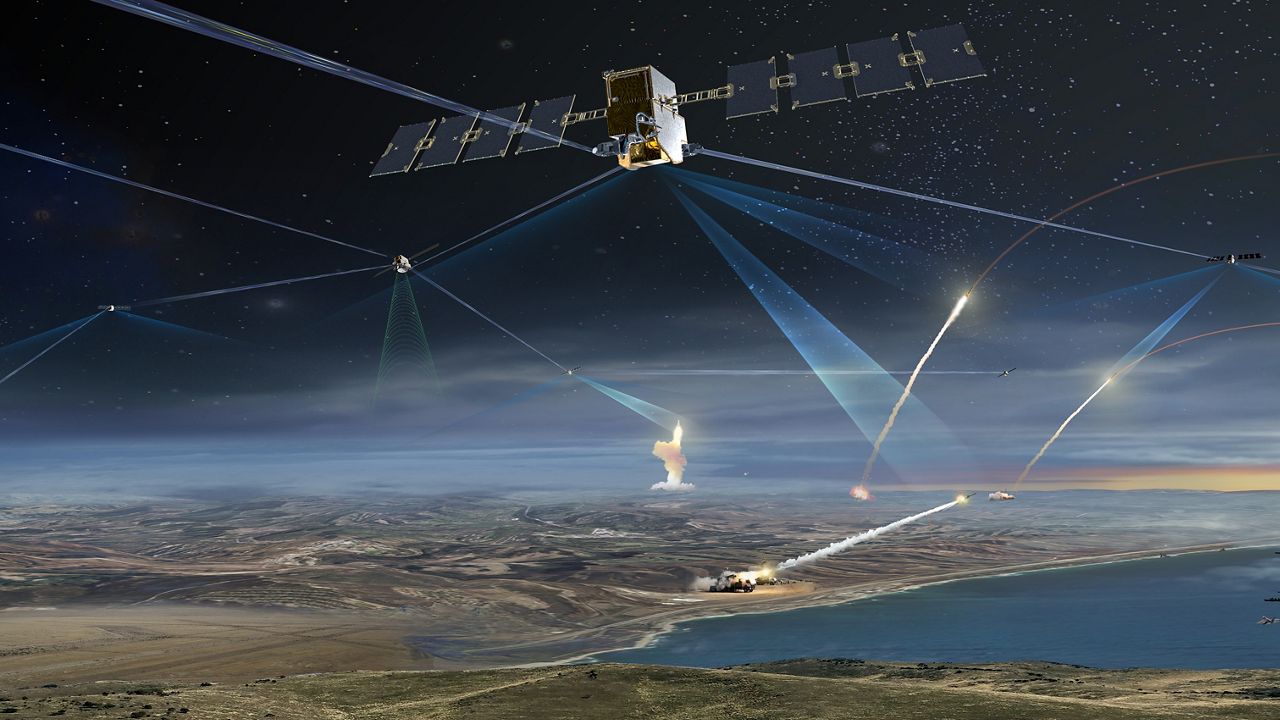The U.S. Space Development Agency has awarded a pair of contracts worth more than $1.3 billion to build a new series of missile warning and tracking satellites.
On Monday, the SDA announced that L3Harris Technologies, Inc., and Northrop Grumman Strategic Space Systems would build 14 satellites each for a total of 28. They will be part of the SDA’s Tranche 1 Tracking Layer (T1TRK) satellite program and will launch starting in April 2025.
What You Need To Know
- The U.S. Space Development Agency has awarded contracts for L3Harris and Northrop Grumman worth more than $1.3 billion
- As part of the contract, the two companies will build 28 satellites
- The satellites will enter the second generation constellation of the SDA's National Defense Space Architecture
“The T1 Tracking Layer effort is a critical step toward building the National Defense Space Architecture,” said SDA director Derek Tournear in a statement. “SDA is confident that selection of the L3 Harris and Northrop Grumman teams provides the best overall solution to accelerate delivery of a low-Earth orbit constellation with wide-field-of-view infrared sensors for a global missile warning and missile tracking capability in Tranche 1, on schedule.
"I’m pleased to see our industry partners building the marketplace necessary to quickly deliver new space capabilities to the warfighter.”
The primary goal of the Tracking Layer, according to the SDA, is to “provide global indications, warning, tracking and targeting of advanced missile threats, including hypersonic missile systems.”
“This Tranche 1 win demonstrates our ability to nimbly scale from initial demonstration to proliferation with enhanced mission capability, resilience, global coverage, and speed to deployment as threats continue to evolve,” said L3Harris president of space systems Kelle Wendling in a statement.
The work on the L3Harris-developed satellites would be split between its facilities in Fort Wayne, Indiana, and Palm Bay, Florida.
The Space Development Agency (SDA) has selected us as a prime provider for its Tranche 1 Tracking Layer program. pic.twitter.com/HvgvrP1ZbR
— L3Harris (@L3HarrisTech) July 18, 2022
What is the SDA and what are they building?
The Space Development Agency was created in March of 2019, to help the Department of Defense establish and operate a network of satellites and spacecraft collectively known as The National Defense Space Architecture (NDSA).
The first two satellite missions launched on behalf of the SDA were onboard the SpaceX Transporter-2 mission on June 30, 2021. They consisted of Mandrake II and Laser Interconnect Networking Communications System (LINCS) and the Prototype On-orbit Experimental Testbed (POET) payload.
The seven-tiered NDSA structure consists of the following categories:
- Transport Layer
- Battle Management Layer
- Tracking Layer
- Custody Layer
- Emerging Capabilities (Deterrence) Layer
- Navigation Layer
- Support Layer
The initial constellation, dubbed Tranche 0, will consist of 28 satellites: 20 transport layer satellites and eight tracking layer satellites.

On Aug. 31, 2020, the SDA awarded two contracts to York Space Systems ($94 million) and Lockheed Martin Corp. ($187.5 million) for the 20 transport layer satellites.
“(These) will initiate the design, development and launch of constellations composed of tens of satellites with optical inter-satellite links capable of sending and receiving wideband data to and from other space vehicles and ground stations,” said Dr. Mark Lewis, the now former Acting Deputy Under Secretary of Defense for Research and Engineering, during a Pentagon media roundtable at the time.
“The capability demonstrated in the transport layer Tranche 0 will provide U.S. warfighters with periodic regional access to low-latency data connectivity via space-based extensions of existing tactical data links," he added.
Then, in October 2020, both L3Harris ($193.6 million) and SpaceX ($149.2 million) were awarded contracts for four prototype satellites each as part of the Tracking Layer Tranche 0.
Like with the transport layer satellites for Tranche 0, the DoD stated that these eight Overhead Persistent Infrared Imagine (OPIR) satellites from L3Harris and SpaceX should be ready by the end of FY2022.
In a statement on Monday, L3Harris confirmed that its four satellites would launch in 2023.
The tracking layer satellites are designed to detect threats and then relay that information to the transport layer satellites.
"The transport satellites are the backbone of the National Defense Space Architecture," Tournear said. "They take data from multiple tracking systems, fuse those, and are able to calculate a fire control solution, and then the transport satellites will be able to send those data down directly to a weapons platform via a tactical data link, or some other means."
What comes next?
In its October 2020 announcement of contracts, the SDA stated that the Tranche 0 work should be completed in 2022 with Tranche 1 coming more into play in 2024 with “a couple hundred satellites in the transport layer and a few dozen in the tracking layer.”
Tranche 2 would start rolling out in 2026 and “the SDA would continue to build out the system as needed,” with new developments expected on a roughly two-year timeframe.
"Our architecture is entirely warfighter-focused for the terrestrial battlefield," Tournear said. "Our goal is to be able to provide real-time targeting data for targets, for time-sensitive targets and for missiles, so that the terrestrial warfighter can utilize space to be able to affect their mission in real time. We're focused on making sure that we can provide capabilities from space."





